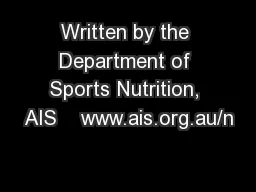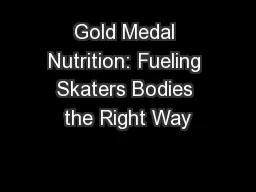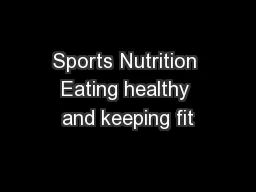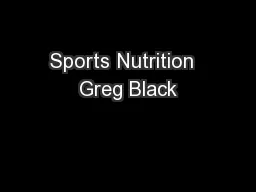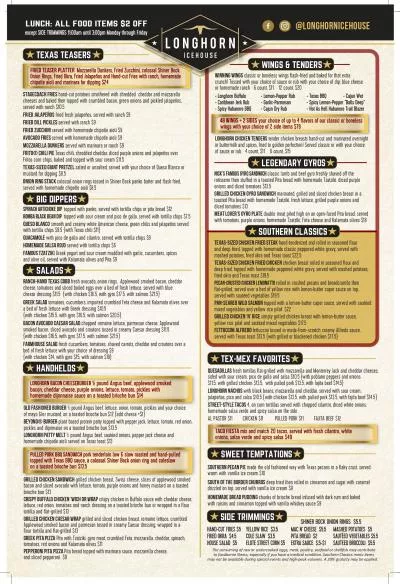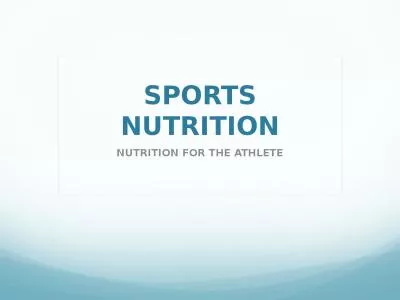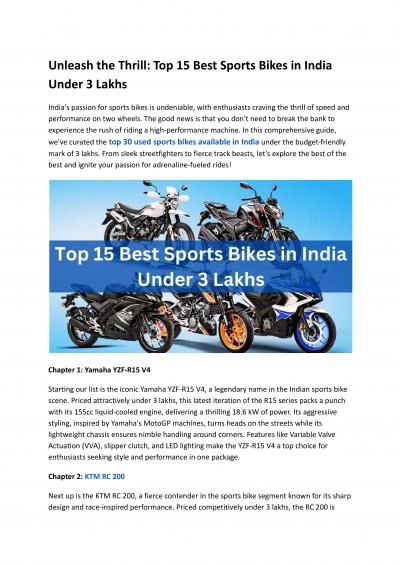PDF-Written by the Department of Sports Nutrition, AIS www.ais.org.au/n
Author : giovanna-bartolotta | Published Date : 2015-10-30
Australian Sports Commission 2004 manipulate their food intake and training to achieve their desired body fat levels Sprinters needing to reduce their body fat level
Presentation Embed Code
Download Presentation
Download Presentation The PPT/PDF document "Written by the Department of Sports Nutr..." is the property of its rightful owner. Permission is granted to download and print the materials on this website for personal, non-commercial use only, and to display it on your personal computer provided you do not modify the materials and that you retain all copyright notices contained in the materials. By downloading content from our website, you accept the terms of this agreement.
Written by the Department of Sports Nutrition, AIS www.ais.org.au/n: Transcript
Download Rules Of Document
"Written by the Department of Sports Nutrition, AIS www.ais.org.au/n"The content belongs to its owner. You may download and print it for personal use, without modification, and keep all copyright notices. By downloading, you agree to these terms.
Related Documents

